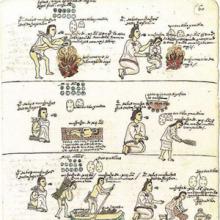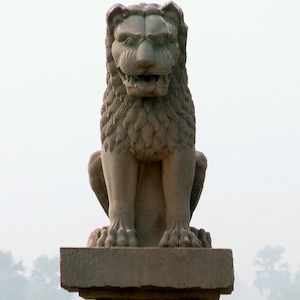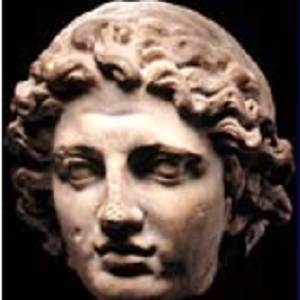Ancient (before 500 CE)

Salisbury Crags
Before about 1800, most people in the Christian world assumed that the earth was just a few thousand years old. But growing interest in fossils and strange geological formations made some people think the earth must actually be much older.

History of the Earth in a Cycle
Our sense of time has been extended into the deep past in the last two centuries or so, and particularly since the 1950s, when Willard Libby showed that you could use the breakdown of radioactive molecules such as Carbon-14 to date events thousands of years before there were any written documents

Primer: Gender in World History
Gender history developed in the 1980s out of women’s history, when historians familiar with studying women increasingly began to discuss the ways in which systems of sexual differentiation affected both women and men.

Ashokan Pillar with a Single-Lion Capital at Vaishali, India
This is a photograph of one of the Ashokan pillars, topped with a single lion. (Other pillars are topped with three lions, an emblem that is now on the state seal of India and Indian coins,
Selections from Ashoka, Rock and Pillar Edicts
The “rock and pillar edicts,” inscriptions that King Ashoka ordered carved in stone on large rocks in prominent places or on tall pillars that he had erected for this purpose, are the best record we have of Ashoka’s reign. The edicts are found in a number of different locations

Short Teaching Module: Emperor Ashoka and Buddhism
Buddhism is based on the ideas of a north Indian prince, Siddhartha Gautama (fl. ca. 500 B.C.E.), called the Buddha (“enlightened one”), who through meditation gained insight into what he understood were cosmic truths.

World History for Us All
Its units and lesson plans utilize a range of primary sources, which revolve around three themes are: Humans and the Environment, Humans and Other Humans, Humans and Ideas.
People with a History: An Online Guide to Lesbian, Gay, Bisexual, and Trans* History
In essence then this is an excellent site to find additional materials with some caveats: some links are now dead, in other ways this site is dated, and other parts – such as the section on images – are still empty. Still the materials that this site provides educators with great resources and
BBC Ancient Greece
Overall, the site functions well as a cursory introduction to Ancient Greece and will be of most use to casual visitors, or school-level educators seeking to provide students with additional information.